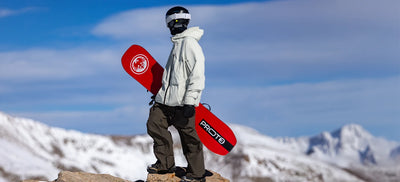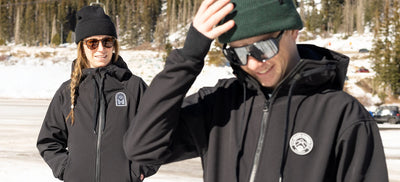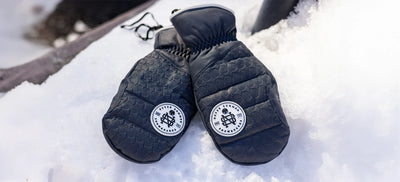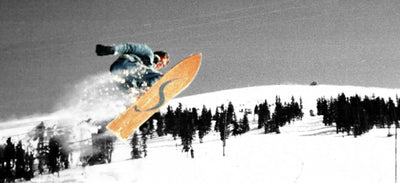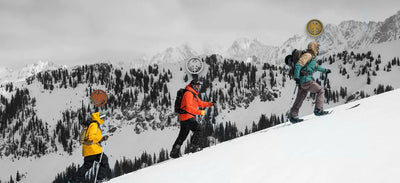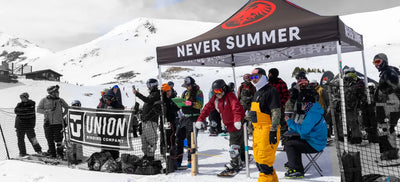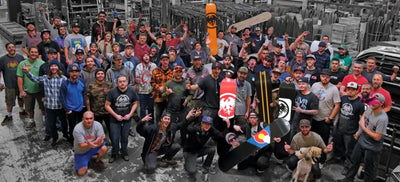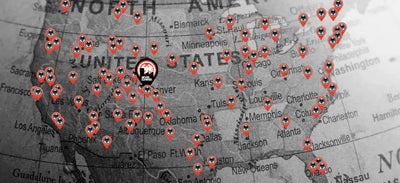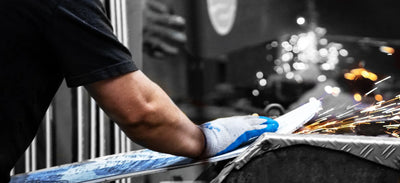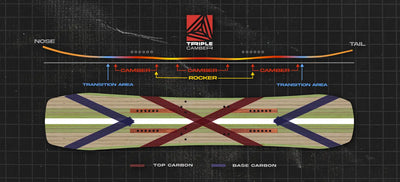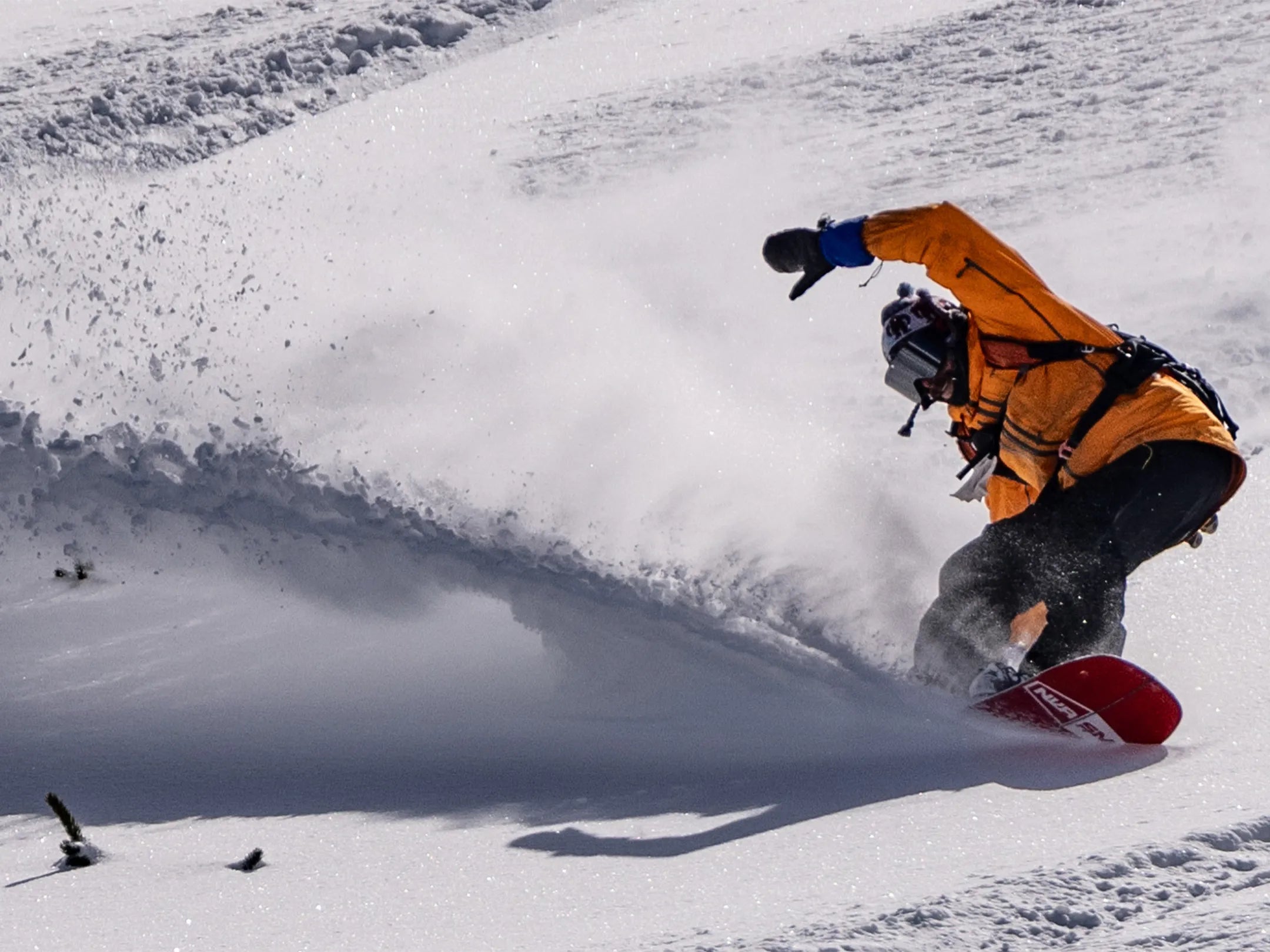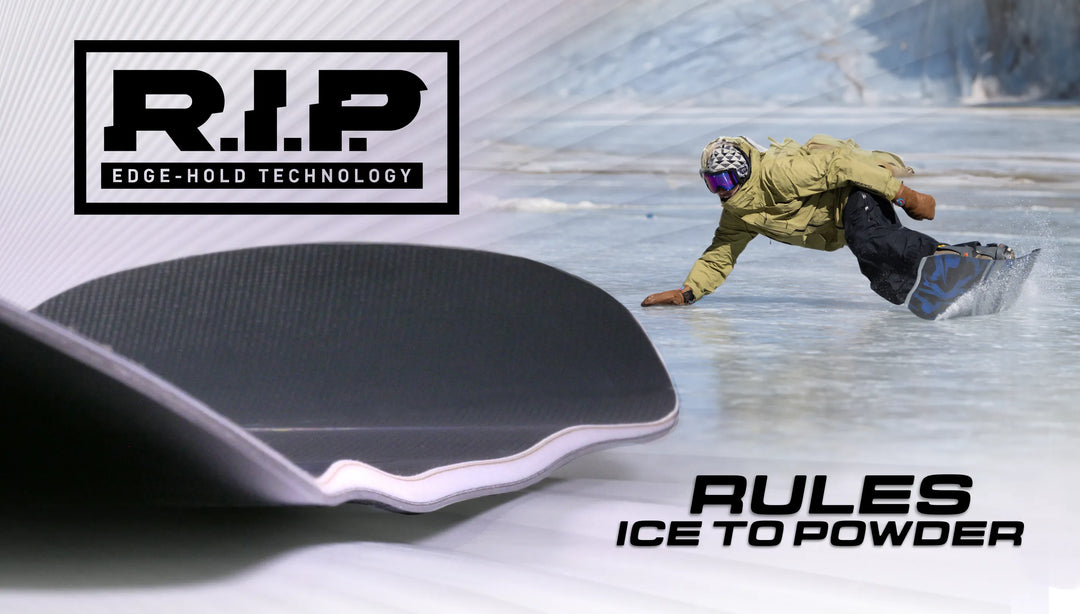Backcountry Snowboarding can be an adventurous escape for just about anyone.
Have you outgrown snowboarding at the resort, over the ski lifts, or are just looking for a new thrilling and off-the-beaten-path experience? Backcountry snowboarding might be the perfect adventure for you. Getting out into the backcountry opens up a whole new world for a snowboarder. It offers untouched powder, views that will sweep you off your feet, and the freedom that you might be lacking in a resort. Before heading out and strapping your snowboard on in the backcountry, there are some things you need to know to be properly informed and well-prepared. This article will help guide you through everything you need to know and the gear you need to get before heading out to ride in the backcountry.

Understanding Backcountry Snowboarding
What is Backcountry Snowboarding?
Backcountry snowboarding refers to riding outside the boundaries of established ski resorts, where you can explore pristine, untouched snow and rugged natural terrain. It involves hiking or using specialized equipment like splitboards to ascend mountains, allowing you to access remote and secluded areas that are inaccessible by chairlifts or gondolas. Backcountry snowboarding offers a unique and intimate connection with nature, but it also requires a higher level of skill, knowledge, and preparedness compared to resort riding.
The Appeal of Backcountry Snowboarding
Backcountry snowboarding appeals to adventurous boarders seeking solitude, pristine landscapes, and a deeper connection with nature. It offers an escape from crowded slopes, lift lines, and the constraints of resort boundaries. Being able to choose your own lines and find the best deep snow in the untouched beauty of the mountains is one of the biggest draws for backcountry enthusiasts. It also gets you out there with your backcountry skiing friends! You need to remember, it's important to approach backcountry snowboarding with respect, awareness, and a solid understanding of the risks involved.
Safety Considerations
Backcountry snowboarding presents inherent risks, including avalanches, exposure to extreme weather conditions, and potential injuries in remote locations. It is crucial to prioritize safety and take necessary precautions to mitigate these risks. This article will cover essential safety measures, gear requirements, and the importance of education and training before venturing into the backcountry.
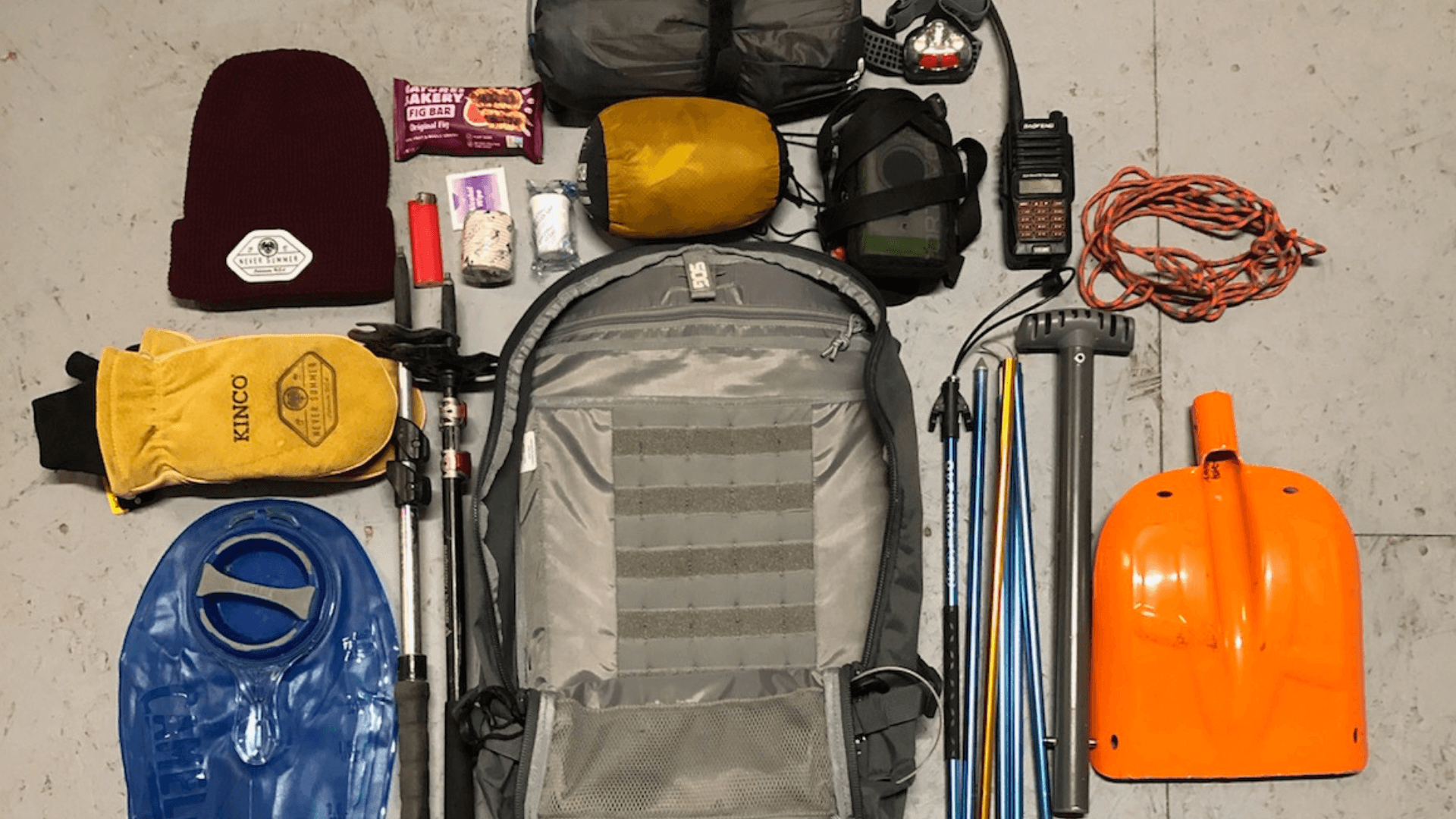
Essential Gear for Backcountry Snowboarding
Snowboard Selection and Setup
Choosing the right snowboard for backcountry riding is essential for an enjoyable and safe experience. Consider factors such as board length, profile, and flex to match your riding style and the terrain you'll encounter. Lots of people choose a splitboard for backcountry (this is a snowboard that splits down the middle for easier uphill touring). Additionally, setting up your snowboard with the appropriate bindings and equipment for backcountry use, such as climbing skins, poles, splitboard bindings, snowshoes, or Verts (one of our favorites) is crucial for efficient ascents and transitions.
Avalanche Safety Equipment
Avalanche safety gear is non-negotiable when venturing into the backcountry. This includes an avalanche transceiver (also known as a beacon), a collapsible avalanche probe, and a sturdy shovel. It is VERY important to carry a beacon, shovel and probe. These tools are essential for avalanche rescue operations, should someone in your group be caught in a slide. Furthermore, an airbag backpack and an avalanche airbag system can provide an extra layer of safety by increasing your chances of staying on the surface during an avalanche.
Clothing and Accessories
Proper clothing and accessories are vital for staying warm, dry, and comfortable in the backcountry. Layering is key to managing body temperature, and technical fabrics that wick moisture away from the skin are highly recommended. Don't forget essentials like waterproof outerwear, warm gloves, goggles, a helmet, and a reliable backpack to carry your gear and essentials.
Rider: Nick Larson
Preparing for Backcountry Snowboarding
Physical Fitness and Conditioning
Backcountry snowboarding can be physically demanding, requiring hiking or skinning uphill for extended periods. Prioritize your physical fitness and conditioning to ensure you have the stamina and strength needed to enjoy the experience fully. Incorporate cardiovascular exercises, strength training, and flexibility exercises into your fitness routine to prepare your body for the challenges ahead.
Avalanche Safety Training
Before heading into the backcountry, it's crucial to undergo comprehensive avalanche safety training. Courses such as AIARE (American Institute for Avalanche Research and Education) Level 1 provide valuable knowledge and skills related to snowpack analysis, avalanche rescue techniques, route selection, and decision-making in avalanche terrain. This training will equip you with the necessary tools to assess risk, make informed decisions, and respond effectively to potential avalanche situations. Your local avalanche forecast reporters may have available courses.
Weather and Snow Conditions
Staying informed about weather and snow conditions is essential for planning a safe and enjoyable backcountry trip. Check local weather forecasts, snowpack stability reports, and avalanche bulletins regularly. Understanding snowpack characteristics, recent weather patterns, and the potential for changing conditions will help you make informed decisions about where and when to ride.
Rider: Kevin Blue
Planning and Navigation
Route Planning and Research
Thorough route planning and research are essential for a successful backcountry snowboarding adventure. Study maps, guidebooks, and online resources to identify potential routes and objectives. Take into account factors such as elevation gain, slope angles, and potential hazards like cliffs or crevasses. Planning your route through backcountry terrain in advance will help you make informed decisions and minimize exposure to unnecessary risks.
Avalanche Terrain Evaluation
Understanding and evaluating avalanche terrain is crucial for backcountry snowboarding safety. Learn to identify potential avalanche start zones, terrain traps, and slopes with critical angles. Avoid traveling on steep slopes and areas prone to avalanches, especially during times of elevated avalanche danger. Continuously assess the snowpack and terrain features to make informed decisions about where to ride and when to avoid potentially hazardous areas. It is also important to note where other backcountry travelers are around you.
Safety Measures and Risk Management
Avalanche Awareness and Risk Assessment
Maintaining constant awareness of avalanche conditions and the potential risks associated with backcountry snowboarding is paramount. Regularly assess snowpack stability, observe signs of instability (such as recent avalanches or cracking in the snow), and practice safe travel protocols, such as traveling one at a time on potentially hazardous slopes. Understand the limitations of your knowledge and experience, and be willing to turn back or change plans if conditions are unfavorable.
Group Dynamics and Communication
Backcountry snowboarding is often enjoyed in groups, which can enhance safety and provide support in case of emergencies. Effective group dynamics and communication are key to ensuring everyone's well-being. Establish clear communication protocols, discuss decision-making processes, and practice using radios or other communication devices. Regularly check in with each other and maintain a cohesive group dynamic to minimize risks and address any issues promptly.
First Aid & Emergency Preparation
You can have an emergency happen at any time in the backcountry and you need to make sure you are prepared the best that you can be. Find or make yourself a fully stocked first aid kit to have in your backpack. It should include essentials like bandages, antiseptics, and splints. Consider enrolling in a wilderness first aid course to learn basic medical skills specific to remote and outdoor environments. Additionally, ensure you have a reliable communication device, such as a satellite phone or emergency beacon, to call for help in case of serious emergencies.
Rider: Austin Gibney
Enjoying Backcountry Snowboarding Responsibly
Leave No Trace Principles
Adhering to the Leave No Trace principles is essential for preserving the wilderness and ensuring its enjoyment for future generations. These principles include:
- Plan ahead and prepare
- Travel and camp on durable surfaces
- Dispose of waste properly
- Leave what you find
- Minimize campfire impacts
- Respect wildlife
- Be considerate of other visitors
Respecting Wildlife and Local Communities
Backcountry snowboarding often takes place in habitats shared by various wildlife species. Respect wildlife by observing from a distance and avoiding actions that could disturb or harm them. Additionally, be considerate of local communities by following any specific guidelines or regulations they have in place for backcountry activities. Respect private property and local customs, ensuring a positive relationship between outdoor enthusiasts and the communities that surround these natural areas.
Rider: Kevin Blue
Conclusion
Backcountry snowboarding offers an unparalleled experience for those seeking adventure, solitude, and a deeper connection with nature. However, it is essential to approach this activity with respect, preparedness, and a commitment to safety. By understanding the risks, investing in proper gear and education, and practicing responsible behavior, you can enjoy the exhilaration and beauty of the backcountry while minimizing potential hazards. So, prepare yourself, gather your gear, and embark on a backcountry snowboarding journey that will leave you with lasting memories.
FAQs
FAQ 1: Is backcountry snowboarding dangerous?
Backcountry snowboarding comes with risks that you may not run into on the resort, such as avalanches and exposure to extreme weather conditions. With proper preparation, education, and adherence to safety protocols, You can minimize these risks and maximize your fun. It is crucial to invest in the necessary gear, take an avalanche safety training course, and throughout your day, continuously assess conditions to ensure a safe and enjoyable experience.
FAQ 2: How do I know if a slope is safe for backcountry snowboarding?
Assessing slope safety requires a combination of knowledge, experience, and careful observation. Factors to consider include recent weather conditions, snowpack stability, slope angle, and signs of instability. It is recommended to take avalanche safety courses and consult local avalanche forecasts to make informed decisions about slope safety.
FAQ 3: Can I go backcountry snowboarding alone?
Backcountry snowboarding alone is strongly discouraged. Traveling in a group provides additional safety measures, including the ability to assist in case of emergencies. Group members can also share knowledge and decision-making responsibilities, enhancing overall safety and enjoyment. You should always ride with a partner.
FAQ 4: What type of snowboard is best for backcountry riding?
The right snowboard for backcountry riding for you depends completely on personal preference, riding style, and the type of terrain you intend to tackle. Some boards are however built for more of a backcountry approach. Generally, backcountry riders opt for splitboards, which can be separated into skis for uphill travel and reattached as a snowboard for downhill descents. Splitboards offer versatility and efficiency in backcountry environments. Your other option is to strap your snowboard to a backpack or carry it and use snowshoes or Verts to get up the mountain.



